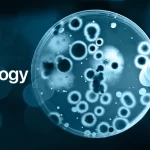
The Human Microbiome Project and the Vital Role of Bioinformatics
October 1, 2023Unraveling the Mysteries of the Human Microbiome
Commencement and Aims:
Initiated in 2007, the Human Microbiome Project (HMP) represented a crucial juncture in the field of biomedical exploration. This venture emanated from a desire to delve into the myriad of microbial entities coexisting within the human organism, collectively known as the “microbiome.” The goals were diverse, involving the listing of microbial species coexisting with humans, scrutinizing their functionalities and interrelations, and deciphering their significance in health and pathological states. This mission aimed to unravel the enigma of sophisticated ecosystems housed in various regions of the human anatomy such as the gut, skin, oral cavity, among others.
Magnitude and Range:
The magnitude of the HMP was vast, centering around the examination of specimens from 242 healthy subjects, culminating in the delineation and profiling of upwards of 100,000 microbial entities. The range went beyond mere delineation, seeking to comprehend the dynamics, symbioses, and influences of microbes on the host organism, providing insights into the correlation between microbiome shifts and diverse health disorders and ailments.
Breakthroughs and Advancements:
The insights obtained from the HMP have been revolutionary, granting a deeper comprehension of the ramifications of the human microbiome in metabolic processes, immune responses, developmental phases, and even psychological well-being. This has unveiled links between microbial discrepancies (dysbiosis) and multiple ailments including inflammatory intestinal conditions, obesity, and psychological disorders. The advancements generated from the HMP have endowed researchers with essential insights to investigate prospective therapeutic approaches and prophylactic methodologies centered around the microbiome.
Contribution of Bioinformatics:
The assimilation of bioinformatics constituted a pivotal element in the fruition of the HMP. Considering the colossal quantity and intricacy of the procured data, sophisticated computational approaches were vital for the evaluation, elucidation, and preservation of microbial genomic sequences. Tools of bioinformatics were leveraged to classify the enumerated microbial species, assess their genetic structures, and explore their operational roles and relationships within the human organism. These instruments have been instrumental in navigating the multitude of challenges related to data handling and interpretation, thereby enabling researchers to probe further into the complexities of the microbiome and its ramifications.
Expanding Boundaries:
The integration of state-of-the-art bioinformatics in the HMP has amplified the realms of microbiome exploration. It not only facilitated detailed investigations of microbial species but also established the groundwork for future investigative pursuits delving into the roles of the human microbiome in health and pathology. The strides in bioinformatics have empowered the scientific realm to push the limits of understanding concerning microbial habitats within the human body, and probe innovative territories in formulating therapeutic and prophylactic initiatives focused on the microbiome.
1. The Impact of the Human Microbiome Project:
1.1 Achievements:
The Human Microbiome Project (HMP) has substantially transformed our comprehension of the human microbiome, illuminating its pivotal role in various physiological functions. It has highlighted the microbiome’s integral involvement in metabolic processes, immune responses, psychological health, and neurodevelopmental stages. By discovering connections to numerous health conditions such as inflammatory bowel diseases, obesity, and type 2 diabetes, the HMP has opened new avenues for understanding the intricate relationship between microbiota and human health.
Detailed Impact:
- Metabolism and Immunity: The HMP has revealed the extensive influence of microbiota in regulating metabolism and modulating immune responses, providing insights into the intricate mechanisms by which microbiota contribute to energy homeostasis and immune system balance.
- Mental Health and Neurodevelopment: By exploring the gut-brain axis, the HMP has emphasized the significance of microbiota in mental well-being and neurodevelopmental processes, promoting research into microbial contributions to neurological and psychological conditions.
- Links to Diseases: The association of the microbiome with various diseases unearthed by the HMP has directed scientific focus towards understanding microbial imbalance, or dysbiosis, and its repercussions on health, leading to the exploration of therapeutic interventions targeting microbiota.
1.2 Challenges and Future Prospects:
Despite the groundbreaking advancements, the journey is far from over. There is an imperative need for expansive research across diversified populations and an array of health states to further decode the dynamic essence and comprehensive ramifications of the microbiome on human health.
Future Research Directions:
- Diversity and Variability: Expanding studies to include diverse ethnic and demographic populations will be essential to comprehend the variability and adaptability of the microbiome in different environmental and genetic contexts.
- Longitudinal Studies: The conduct of longitudinal studies is pivotal to understand the temporal alterations in the microbiome and their correlation with disease progression and health trajectories.
2. Bioinformatics: The Backbone of HMP:
2.1 Challenges in Bioinformatics:
The amalgamation of scalability, integration, interpretability, and translational capabilities stands as a formidable challenge in the realm of bioinformatics. The HMP, generating voluminous and complex datasets, necessitates the employment of advanced analytical strategies to decode the multifaceted nature of microbial genomes.
Addressing Challenges:
- Scalability and Integration: Developing scalable solutions and integrative platforms is crucial for managing and analyzing the extensive datasets generated, ensuring cohesive interpretation of diverse microbial genomic information.
- Interpretability and Translation: Enhancing the interpretability of analytical outcomes and translating these findings into tangible insights are vital for advancing our understanding of microbiome functions and interactions within the human body.
2.2 Advancements and Demand:
Bioinformatics serves as the linchpin, converting the plethora of acquired data into discernible knowledge. The evolution of innovative analytical instruments and methodologies is cardinal to delve deeper into the labyrinth of microbiome intricacies and their impacts on human well-being.
Progressive Developments:
- Innovative Tools: The creation and refinement of bioinformatics tools are paramount for decoding the complex interplay between diverse microbial species and their host, allowing a more nuanced understanding of their functional roles and influences.
- Enhanced Understanding: The advancements in bioinformatics are enabling researchers to unravel the mysteries of microbial ecosystems and their multifarious interactions with the human host, offering insights into potential therapeutic strategies and preventative measures targeting the microbiome.
3. AI and Machine Learning in Microbiome Research:
3.1 Elevating Interpretation:
AI and machine learning are integral in the intricate study of the human microbiome, providing enhanced interpretative prowess to uncover the subtle and intricate relationships between different microbial entities. These technologies help in dissecting the myriad interactions within the microbiome, allowing researchers to draw precise correlations between microbial activities and human health.
Detailing Interpretation:
- Pattern Recognition: AI and machine learning excel in identifying patterns within massive and complex datasets, revealing connections between microbial diversity, abundance, and host health, which are often not discernible through conventional analytical methods.
- Predictive Analytics: These technologies enable the development of models that can predict the consequences of microbial interactions and variations on host health, assisting in preemptive health management and disease prevention strategies.
3.2 Future Implications:
The amalgamation of AI, machine learning, and advanced computational approaches is poised to fast-track innovations in the realms of diagnostics, therapeutics, and prophylactics, sculpting the trajectory of microbiome research and its practical implementations.
Innovations and Applications:
- Diagnostic Innovations: The fusion of AI and microbiome research will facilitate the development of pioneering diagnostic procedures capable of detecting alterations in microbiome composition, aiding in early detection and management of diseases.
- Therapeutic Interventions: AI-driven insights are instrumental in creating novel therapeutic interventions targeting the microbiome, allowing personalized treatment approaches based on individual microbiome compositions.
- Preventive Strategies: Advanced computational models aid in designing preventive measures by anticipating potential microbiome-related health issues, enabling proactive management of health and wellness.
4. Public Involvement and Data Accessibility:
4.1 Democratizing Data:
Making the vast reservoirs of HMP data more accessible and user-friendly is vital to nurturing a cooperative research atmosphere. It enables a broader spectrum of scientists and researchers to delve into microbiome studies, thus contributing diverse perspectives and enriching the field with multifarious insights.
Expanding Accessibility:
- Open Access Platforms: The development of platforms that provide open access to HMP data allows for the extensive sharing of information, encouraging collaborative endeavors and fostering innovations in microbiome research.
- User-friendly Interfaces: Creating intuitive interfaces ensures that researchers with varying levels of expertise can efficiently navigate and utilize the data, fostering inclusivity and diverse contributions in microbiome research.
4.2 Public Participation:
Involving the wider public in microbiome research is essential. It propels the communal quest for understanding and ensures that the directions of research are synergistic with public interests and necessities.
Community Engagement:
- Educational Outreach: Educating the public about the significance of the microbiome and the ongoing research initiatives drives awareness and interest, promoting an informed community participation in the discourse surrounding microbiome studies.
- Citizen Science Initiatives: Launching initiatives that allow the public to actively participate in microbiome research fosters a sense of ownership and engagement in scientific discoveries, ensuring that research is reflective of communal needs and aspirations.
5. Broadening the Scope of Microbiome Inquiry:
5.1 Incorporating Varied Perspectives in Research:
Achieving an all-encompassing and subtle insight into the microbiome necessitates the integration of a varied range of populations and myriad health scenarios in upcoming microbiome inquiries. Such integration will assist in the clarification of the microbiome’s varying impacts and its distinctive interactions across diverse demographic and health backgrounds.
Delineating Diversity:
- Cross-Cultural Inquiries: Implementing inquiries spanning diverse ethnic and cultural demographics will illuminate the roles of genetic and environmental constituents in shaping the microbiome, enhancing our understanding of its diverse interplays and ramifications.
- Research Across Health Spectra: Exploring the microbiome against a backdrop of diverse health scenarios, both prevalent and obscure, empowers the research fraternity to discern the plethora of ways microbial colonies dictate health and ailment states.
5.2 The Fluidity of the Microbiome:
Comprehending the flexibility and robustness of the microbiome against varying external modifications like nutrition, surroundings, and habitual patterns is crucial. Such comprehension is foundational for formulating methods to deliberately modify microbiome structures for therapeutic gains and prophylactic health care.
Examining Adaptability:
- Influence of Surroundings: Delving into the ramifications of varying living conditions and habitual regimes on the microbiome’s structure and operations is key to grasping its fluid nature and pinpointing alterable elements that can enhance microbiome wellness.
- Interplay with Nutrition: Probing the symbiosis between nutritional elements and the microbiome aids in formulating individualized dietary guidelines intended to sustain a harmonious and healthful microbial habitat.
Conclusion:
The Human Microbiome Project epitomizes a monumental expedition into the labyrinthine ecosystems residing within our beings, disclosing the far-reaching consequences of the microbiome on our holistic health. The amalgamation of bioinformatics, avant-garde computational techniques, and cross-disciplinary inquiries is directing the trajectory of microbiome studies, catapulting research initiatives to a point where the enigmas of our internal celestial body will be elucidated, heralding unparalleled innovations in medical science.
This harmonic convergence of sophisticated computational analyses with multi-faceted scientific pursuits is reshaping the frameworks of microbiome studies, heralding groundbreaking progressions in medical treatments and ailment control methods. The inclusion of diverse study groups, the encouragement of communal contribution, and the open-access approach to information are central in crafting a thorough and inclusive microbiome research domain. This approach guarantees that the transformative insights originating from this domain spread extensively, instigating a paradigm shift in medical treatment, ailment management, and our collective perception of human biological existence.


















